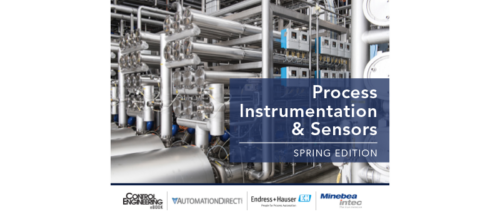Efficiency, asset management benefits for valves and actuators
Digitalization for valve and actuator automation can help improve facility management and reduce downtime across the board.
Valve and actuator insights
- Modern technological innovations for valves and actuators are about the data they are able to generate and retain, which enables engineers to make faster and better-informed decisions.
- The industrial Internet of Things (IIoT) and asset management can help streamline many of these concepts and make it easier for engineers to get the data they need from valves and actuators.
The industrial Internet of Things (IIoT) technology, which relies on devices equipped with sensors, electronics and software to enable them to gather and share data, is the foundation of an approach that enables a site to run as efficiently and safely as possible.
When it comes to valves and actuators, modern technological innovations are not just about the products themselves; it is also about the data they are able to generate and retain, which enables engineers to make faster and better-informed decisions.
The value of data provided by the digitization of systems cannot be overstated. However, in order to receive data, a site first needs to be fitted with the appropriate equipment that can retrieve useful information. When operating hundreds of valves on a site, having an intelligent actuator that can provide advanced data logging capabilities is vital to a functional digital asset management network. Intelligent actuators should give the operator access to the data both in the field and in the control room, via an integrated network.
Network control
Comprehensive data communication is an essential element in modern actuation. A network control system for valve actuators will allow the site operator to control the operation at all times, 365 days a year, while monitoring up to 240 actuators on a single fault tolerant field network, and up to 20km long without repeaters.
To meet these requirements, engineers incorporate field communication networks that enable plant equipment to be controlled and monitored by their distributed control systems (DCSs). For a DCS to function effectively, it requires a master station. This provides an essential link between field devices and the central DCS.
A master station is usually available in either single, dual or hot standby configurations. The single option provides redundant host connections and redundant field network loops while the dual configuration sees two fully isolated independent units installed side by side. The hot standby variant offers full redundancy, and every interface is replicated. In the event of a fault occurring, the changeover to the standby is seamless without loss of data and control.
Intelligent asset management
The maintenance and management of assets digitally through a cloud-based system can also offer benefits. An intelligent asset management cloud-based system will be able to analyze information from the data loggers within the intelligent actuators.
For decades, intelligent actuators have been able to capture useful data – torque, operations, temperature initially, and later vibration with the latest product range – and keep this data stored in the actuator. The challenge then was this data was not really used for the benefit of the plant operation. Today, with the technology available it is possible to process and make sense of the data to analyze not only actuator performance, but also valve performance.
The focus now is on how to retrieve this data in the most efficient way. To process it and present it in a streamlined and simple way that allows the operator to have a holistic view of what is exactly occurring on site, allowing for faster and informed decisions when it comes to maintenance and minimizing downtime.
All the elements of modern intelligent electric actuation – from cloud-based intelligent asset management to DCS and master stations – provide simplified, secure, and economical solutions to support long-term efficiency and asset management.
– This originally appeared on Control Engineering Europe’s website. Edited by Chris Vavra, web content manager, CFE Media and Technology, cvavra@cfemedia.com.
Do you have experience and expertise with the topics mentioned in this content? You should consider contributing to our CFE Media editorial team and getting the recognition you and your company deserve. Click here to start this process.



